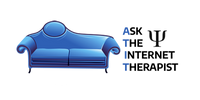Signs of Depression
Posted by Jef Gazley, M.S., LMFT, DCC on Aug 9th 2022
There are many types of depressive disorders, the three most common being Major Depression, Dysthymia, and Atypical. These different types share similar symptoms, and the feelings of being very sad and hopeless.
They vary, however, in length of condition and severity. There is also a distinction made between Situational Depressive Episode, which comes about due to life stresses ~ and Endogenous Depression, which is caused by a low amount of neurotransmitters ( brain chemicals ). To a large degree, this is usually genetic.
Symptoms of depression are:
- Sad mood / poor affect.
- Lack of interest.
- Up or down weight fluctuation.
- Insomnia or sleeping excessively.
- Restlessness.
- Feelings of worthlessness and hopelessness.
- Problems with short-term memory.
- Lack of concentration.
- Feeling suicidal.
- A major depressive episode needs five of these symptoms with no time limit, whereas dysthymia needs to have a two-year duration, but only two of the symptoms. Dysthymia is a more chronic condition whereas a major depressive episode is more acute.
Depressive conditions, regardless of type, are usually treated with psychotherapy (counseling), and if serious enough, with medication. The medication is called an anti-depressant and works on the neurotransmitters. They include Elavil, Triavil, Imipramine, Prozac, Paxil, Zoloft, Anafranil, Luvox, and Effexor.
The medication often needs to be taken for 9 months to 2 ½ years and some people need to take them for their entire life. They are all rather safe, but sometimes have side effects like all medications. These include dry mouth, anxiety, headaches, weight fluctuation, and temporary sexual problems such as lack of libido (desire).

